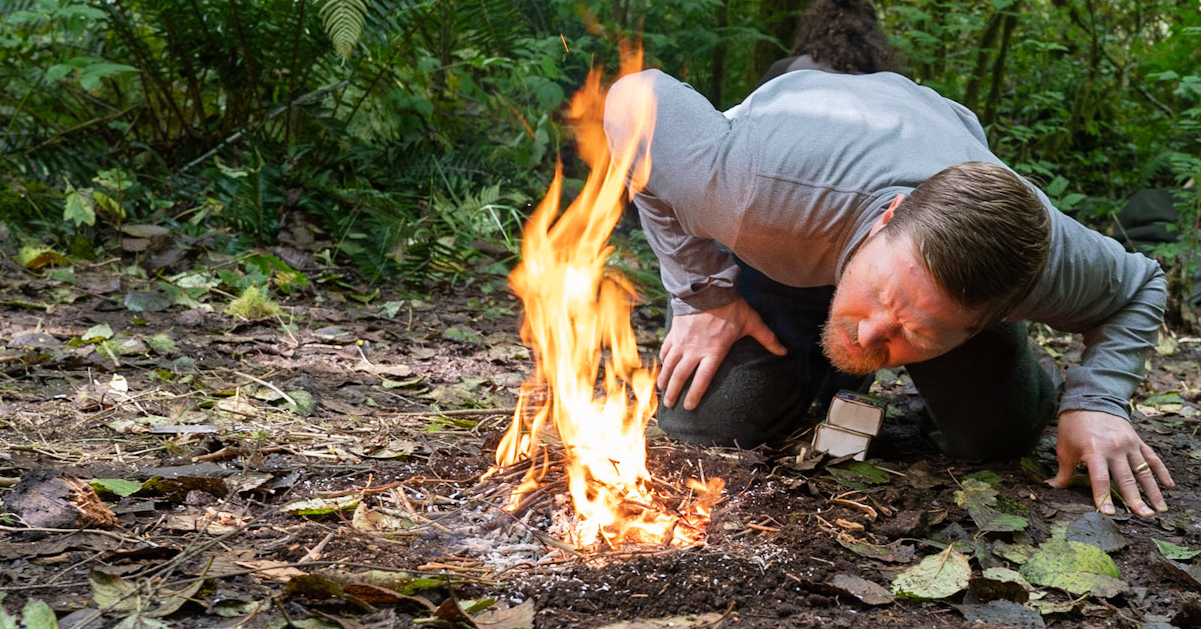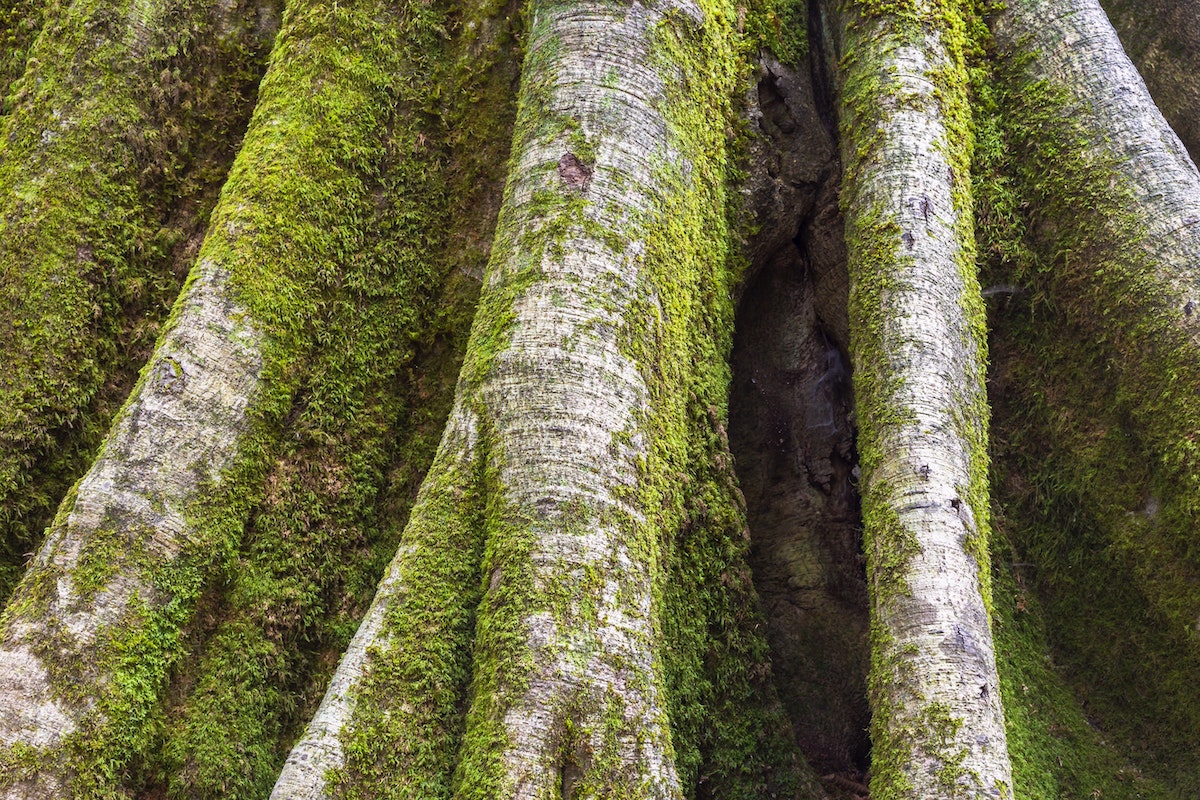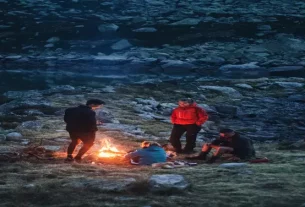Understanding the Significance of Water Indicators within the Wilderness
Water indicators throughout the wilderness play a significant position in making certain the security and well-being of outside lovers, hikers, and adventurers. Understanding these indicators is essential for survival and navigation in distant areas the place entry to wash water sources could also be restricted. By recognizing and deciphering the indicators of water within the wilderness, people could make knowledgeable choices which are important for his or her hydration, sustenance, and general security.
The Significance of Water Indicators
Water indicators within the wilderness embody a spread of clues and cues that may assist people find sources of water. These indicators embrace visible indicators resembling lush vegetation, animal tracks converging in direction of a particular space, and topographical options like depressions or valleys the place water is more likely to gather. By being observant and attuned to those indicators, people can improve their probabilities of discovering clear and potable water within the wild.
Deciphering Animal Conduct
Animals within the wilderness can function efficient water indicators. Wildlife tends to congregate round water sources, so observing animal conduct can present useful insights into the presence of close by water. Birds flying to and from a selected location, animal tracks resulting in a stream or pond, or an abundance of insect exercise close to a water physique are all indications that water is close by.
Understanding Pure Landscapes
The topography of the wilderness itself affords quite a few clues concerning the presence of water. Valleys, low-lying areas, and depressions typically point out the move of water or the buildup of groundwater. Moreover, the expansion of vegetation resembling willow bushes, cattails, or different water-loving crops can sign the proximity of water sources. By analyzing the panorama and the vegetation patterns, people can higher pinpoint the place water is likely to be positioned.
Significance of Water for Survival
Water is a basic requirement for survival, particularly within the wilderness the place excessive circumstances and bodily exertion can result in fast dehydration. By recognizing water indicators and understanding tips on how to interpret them, people can be sure that they’ve entry to the required hydration to remain wholesome and secure throughout their out of doors adventures. Correct hydration is important for sustaining bodily capabilities, regulating physique temperature, and sustaining power ranges.
Understanding the indications of water throughout the wilderness is a useful talent for anybody venturing into distant and wild areas. By being conscious of visible indicators, deciphering animal conduct, and analyzing pure landscapes, people can improve their probabilities of discovering water sources and making certain their survival. Remembering the importance of water indicators and proactively searching for out sources of water could make a major distinction in difficult out of doors conditions. Keep hydrated, keep secure, and revel in exploring the fantastic thing about the wilderness.
For extra data on wilderness survival ideas and water indicators, go to Wilderness Survival Skills Website for skilled insights and recommendation.
Figuring out Pure Indicators of Water Sources in Distant Areas
Understanding the Significance of Water in Wilderness Survival
Water is an important useful resource that’s important for human survival, particularly in distant wilderness areas the place entry to wash water is restricted. When venturing into the wild, understanding tips on how to establish pure indicators of water will be the distinction between life and demise. Understanding the indications that time to the presence of water sources in distant places is essential for survival conditions.
Following Animal Tracks to Water
One of many key indicators of water throughout the wilderness is the presence of animal tracks. Animals require water to outlive, so they are going to naturally gravitate in direction of water sources. By following animal tracks, particularly these of mammals resembling deer or raccoons, you’ll be able to improve your probabilities of discovering a water supply. Hold a watch out for trails that lead downhill or converge in a selected space, as these are widespread indicators of water sources close by.
Observing Vegetation and Foliage Patterns
One other indicator of water in distant areas is the presence of lush vegetation and foliage. Timber, crops, and shrubs are likely to thrive close to water sources, as they depend on water for development and nourishment. Search for greenery that seems more healthy and denser than its environment, as this might point out the proximity of a water supply. Moreover, the presence of water-loving crops like cattails or willows generally is a dependable indicator of close by water.
Noticing Topographical Options
Topographical options also can present clues to the presence of water within the wilderness. Hold a watch out for depressions or low-lying areas within the panorama, as these are prime places for water to gather. Valleys, canyons, and areas with dense vegetation usually tend to harbor water sources than dry, barren landscapes. By learning the terrain and on the lookout for pure depressions or dips within the land, you’ll be able to establish potential water sources.
Listening for the Sound of Water
In some circumstances, the sound of water can lead you to its supply within the wilderness. Pay attention for the sound of operating water, resembling a babbling brook or a flowing stream, as this may point out the presence of a close-by water supply. Transferring water is simpler to listen to than stagnant water, so be attentive to any sounds that will lead you to a possible water supply. Following the sound of water can information you to streams, rivers, or different sources of freshwater in distant areas.
With the ability to establish pure indicators of water within the wilderness is a vital talent for out of doors lovers, hikers, and survivalists. By being attentive to animal tracks, vegetation patterns, topographical options, and the sound of water, you’ll be able to improve your probabilities of finding water sources in distant areas. Keep in mind that water is important for survival, and understanding tips on how to discover it within the wild could make all of the distinction in a survival scenario. Keep secure, keep hydrated, and keep knowledgeable when exploring the wilderness.
For extra data on wilderness survival ideas and water sourcing methods, go to Wilderness Survival Skills for skilled steering.
Strategies for Safely Amassing and Purifying Wilderness Water
Water is a vital useful resource when venturing into the wilderness. Understanding tips on how to find, gather, and purify water is important for survival. Within the wild, numerous indicators will help you establish potential water sources. Recognizing these indicators and using the fitting methods for safely accumulating and purifying wilderness water could make a major distinction in a survival scenario.
Inspecting Vegetation
One of many key indicators of water throughout the wilderness is the presence of inexperienced vegetation. Lush, inexperienced vegetation usually grows near a water supply, indicating the supply of water underground. Search for crops resembling cattails, willows, or different water-loving vegetation as they’re good indicators of close by water sources. Following animal tracks or observing the place animals collect also can lead you to water.
Inspecting Topography
One other indicator of water within the wilderness is the lay of the land. Valleys, low-lying areas, and depressions usually tend to gather and maintain water. Rainwater naturally flows to those areas, creating potential water sources. By understanding the topography of the land, you’ll be able to predict the place water is more likely to accumulate and be accessible for assortment.
Noticing Insect Exercise
Bugs also can level you within the course of water sources. Mosquitoes, flies, and bees are likely to congregate close to water. By being attentive to insect exercise, particularly within the early morning and late afternoon when they’re most lively, you’ll be able to observe them to seek out close by water sources. Bees, for instance, fly in a straight line again to their hive from water sources which are normally inside just a few miles.
Trying to find Moisture
Seen moisture or damp soil is a transparent signal of water availability. When you discover damp soil, dig a small gap just a few toes deep to see if water seeps in. By digging in areas with indicators of moisture, you could possibly gather water that has accrued underground. Bear in mind to let the water settle and clear earlier than trying to purify it for ingesting.
Using Purification Strategies
Upon getting positioned a water supply, it’s important to purify it earlier than consumption to take away dangerous pathogens and contaminants. Boiling water is likely one of the only strategies to kill micro organism and different microorganisms. You can too use water purification tablets or filters to make the water secure for ingesting. One other approach is to make use of a transportable water filter to take away impurities and make the water appropriate for consumption.
When within the wilderness, having the ability to establish indicators of water sources and understanding tips on how to safely gather and purify water is important for survival. By using numerous methods resembling inspecting vegetation, inspecting topography, noticing insect exercise, and trying to find moisture, you’ll be able to improve your probabilities of discovering water within the wild. Bear in mind at all times to purify water earlier than ingesting it to keep away from waterborne diseases. Keep hydrated and keep secure within the nice outdoor.
For extra data on wilderness survival expertise and ideas, go to Wilderness Survival Guide.
The Position of Indigenous Data in Recognizing Water Indicators
Indigenous communities have a deep-rooted reference to nature and possess a wealth of conventional data that has helped them thrive for hundreds of years. In the case of recognizing indicators of water throughout the wilderness, this indigenous data performs a vital position in understanding and deciphering the refined alerts that nature offers.
The Knowledge of Indigenous Communities
Indigenous peoples have a profound respect for the atmosphere and a eager understanding of the land and its sources. Their data of the pure world, handed down by way of generations, consists of intricate particulars on tips on how to observe and interpret the assorted indicators that point out the presence of water within the wilderness.
Studying the Indicators
One of many key indicators of water throughout the wilderness is the presence of sure plant species that thrive in moist environments. Indigenous peoples have a deep understanding of the natural world of their environment, permitting them to establish particular crops which are related to water sources. By observing the sorts of vegetation current in an space, they will typically pinpoint the situation of underground springs or streams.
Interpretation of Animal Conduct
One other essential facet of recognizing water alerts within the wilderness is observing the conduct of animals. Indigenous communities have lengthy acknowledged that wildlife has an innate capacity to detect the presence of water sources. By paying shut consideration to the actions and habits of animals, resembling birds congregating in particular areas or mammals gathering close to watering holes, indigenous peoples can glean useful insights into the situation of water sources.
Navigating with Pure Markers
Indigenous data additionally encompasses using pure markers and environmental cues to navigate huge expanses of wilderness in quest of water. Sure tree species, rock formations, or adjustments in terrain can present useful clues concerning the presence of water close by. By fastidiously observing these pure indicators, indigenous communities can navigate the wilderness with confidence and find sources of water extra successfully.
Preserving Indigenous Knowledge
As fashionable know-how and urbanization proceed to impression conventional methods of life, there’s a rising recognition of the significance of preserving indigenous data and practices. By valuing and respecting the knowledge of indigenous communities, we will be taught invaluable classes about residing in concord with nature and safeguarding treasured sources like water.
Indigenous data affords a novel perspective on recognizing water alerts within the wilderness, rooted in centuries of statement, expertise, and reverence for the pure world. By embracing and honoring this conventional knowledge, we will acquire a deeper understanding of the interconnectedness of all residing beings and the important position that water performs in sustaining life.
For additional insights into indigenous data and water conservation, go to Indigenous Water Knowledge.
Emergency Preparedness: Utilizing Water Indicators for Survival within the Wild
Water is important for survival, particularly in emergency conditions. When venturing into the wilderness, it is essential to have a recreation plan for sourcing water to make sure you keep hydrated and wholesome. Understanding indicators of water throughout the wilderness generally is a lifesaving talent. By recognizing indicators of water sources, you’ll be able to improve your probabilities of survival in a difficult atmosphere.
Significance of Water in Emergency Preparedness
Earlier than delving into water indicators, it is vital to know the importance of water in emergency preparedness. The human physique can solely survive just a few days with out water, making it a high precedence in any survival scenario. When misplaced or stranded within the wilderness, discovering water turns into a essential job. Understanding tips on how to establish potential water sources could make a major distinction in your capacity to endure and be rescued.
Frequent Indicators of Water Sources within the Wild
-
Vegetation: Lush inexperienced vegetation, resembling bushes or different crops, generally is a signal of water close by. In drier areas, vegetation is normally concentrated round water sources, making it a key indicator to observe.
-
Animal Exercise: Hold a watch out for animal tracks, as they typically result in water sources. Birds flying low or circling within the sky also can point out the presence of water. Following animal motion patterns can lead you to rivers, ponds, or streams.
-
Topography: Understanding the terrain will help you find water. Valleys, depressions, and low-lying areas usually tend to have water accumulation. Comply with downhill paths or areas the place water runoff is concentrated.
-
Bugs: Mosquitoes, bees, and different bugs are drawn to water sources. Pay attention for buzzing sounds or observe insect conduct to detect potential water sources close by.
Filtering and Purifying Water
Whenever you find a water supply, it is important to filter and purify the water earlier than consumption to keep away from waterborne diseases. Boiling water is the best technique to kill micro organism and parasites. Moreover, transportable water filters and purification tablets are useful instruments to make sure secure ingesting water within the wilderness.
In emergency conditions, understanding tips on how to discover and make the most of water sources is a basic survival talent. By being attentive to indicators resembling vegetation, animal exercise, topography, and bugs, you’ll be able to improve your probabilities of finding water within the wild. Prioritize water security by filtering and purifying any water you discover to remain hydrated and wholesome throughout sudden out of doors challenges.
Bear in mind, being ready and educated about water indicators generally is a game-changer in wilderness survival eventualities. Keep vigilant, keep hydrated, and keep secure in your out of doors adventures.
Key Takeaway:
Water is a basic factor for survival, particularly within the wilderness, the place its presence can imply the distinction between life and demise. Understanding the indications of water throughout the wilderness is essential for anybody venturing into distant areas the place entry to wash water could also be restricted. By recognizing the significance of water indicators, people can improve their preparedness and survival expertise within the wild.
One key facet coated on this article is the importance of water indicators within the wilderness. Pure indicators resembling animal tracks converging, lush vegetation, or the presence of bugs will help people find potential water sources. These indicators function clues that lead explorers to sources of water that will not be simply seen, thereby enhancing their probabilities of discovering a dependable water provide in distant areas.
Furthermore, the article delves into methods for safely accumulating and purifying wilderness water. Strategies like utilizing water filtration techniques, boiling water, or using purification tablets will help take away dangerous contaminants and pathogens, making certain the water is secure for consumption. By understanding these methods, people can mitigate the dangers related to ingesting untreated water within the wild.
Indigenous data additionally performs a vital position in recognizing water alerts throughout the wilderness. Indigenous communities have handed down useful insights and practices for generations, enabling them to establish water sources based mostly on pure indicators. By acknowledging and respecting indigenous data, people can be taught from their experience and improve their very own understanding of discovering water in distant areas.
As well as, the article highlights the significance of emergency preparedness in using water indicators for survival within the wild. With the ability to shortly establish and entry water sources throughout emergencies or sudden conditions will be life-saving. By integrating water indicators into their emergency preparedness plans, people can successfully navigate difficult circumstances within the wilderness.
Mastering the indications of water throughout the wilderness is an important talent for out of doors lovers, hikers, and survivalists. By understanding the significance of water indicators, figuring out pure indicators of water, adopting secure assortment and purification methods, recognizing indigenous data, and prioritizing emergency preparedness, people can considerably enhance their capacity to seek out, entry, and make the most of water sources in distant areas for his or her well-being and survival.
Conclusion
Given the essential position water performs in our survival, understanding the indications of water throughout the wilderness isn’t just a matter of comfort however a matter of life and demise. By recognizing the significance of water indicators within the wilderness, adventurers and out of doors lovers can improve their survival expertise and guarantee their well-being in distant areas. Via figuring out pure indicators of water sources, resembling vegetation patterns, animal tracks, and topographical options, people can improve their probabilities of discovering secure and dependable water sources within the wild.
Furthermore, mastering methods for safely accumulating and purifying wilderness water is important for sustaining good well being whereas exploring distant areas. By using strategies resembling boiling, chemical therapy, and filtration, people can successfully take away dangerous contaminants and pathogens from pure water sources, lowering the chance of waterborne diseases and making certain hydration in difficult environments.
The position of indigenous data in recognizing water alerts can’t be overstated. Indigenous communities around the globe have honed their understanding of the pure world over generations, growing deep insights into the conduct of wildlife, plant distribution, and panorama traits that may assist them find water sources with exceptional accuracy. By acknowledging and respecting indigenous knowledge, we will be taught useful classes about survival within the wilderness and undertake practices which have stood the check of time.
In occasions of emergency, the flexibility to interpret water indicators could make a vital distinction in a single’s survival within the wild. Whether or not misplaced, injured, or going through sudden challenges, people who can learn the panorama for indicators of water availability stand a greater likelihood of staying hydrated and rising their probabilities of rescue. By staying alert to water indicators and being ready with the required instruments and data, adventurers can navigate unexpected conditions with better confidence and resilience.
The data and expertise associated to water indicators within the wilderness are invaluable property for anybody venturing into distant and unfamiliar territory. By understanding the significance of water indicators, figuring out pure indicators of water sources, mastering water assortment and purification methods, respecting indigenous data, and prioritizing emergency preparedness, people can embark on out of doors adventures with better confidence and security. Finally, water is a basic factor of life, and having the ability to learn the indicators of its presence within the wild is a talent that may save lives and enrich our experiences in nature.



